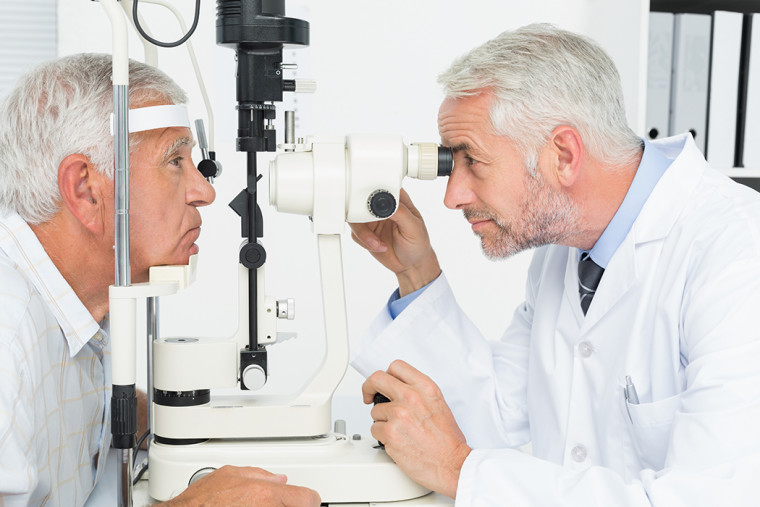All Categories
Featured
Table of Contents

The realm of vision modification is rapidly advancing, driven by groundbreaking technical advancements that are improving exactly how we deal with and view eye health and wellness. From laser surgeries to cutting-edge glasses, the alternatives readily available today are not just much more reliable yet also accommodate the distinct demands of each individual. In this blog site, we will explore exactly how technology is improving vision adjustment choices, causing enhanced individual outcomes and contentment.
1. Laser Modern Technology Innovations.
At the forefront of vision adjustment technology are advanced laser procedures like LASIK and PRK. These techniques have actually been transformed by the intro of femtosecond lasers, which create specific and controlled cuts in the cornea, minimizing pain and improving recuperation time.The most recent innovations, such as topography-guided LASIK, permit a tailored therapy strategy that accounts for the one-of-a-kind curvature of a person's cornea. This degree of customization not just raises the accuracy of the treatment but also minimizes the threat of problems, resulting in clearer vision post-surgery.
2. Smart Get In Touch With Lenses.
The growth of clever get in touch with lenses represents a considerable leap in vision modification modern technology. These lenses can check different health parameters, such as glucose degrees in diabetics or intraocular pressure for glaucoma individuals.By integrating sensing units right into the lens layout, makers are developing an item that surpasses vision correction, supplying beneficial wellness info in real-time. As research in this location advances, clever get in touch with lenses might possibly reinvent how we take care of eye health and wellness and problems connected to vision.
3. Advanced Intraocular Lenses (IOLs)
For clients undertaking cataract surgery or looking for options for presbyopia, advanced intraocular lenses have actually become a game-changer. Today's toric and multifocal IOLs are made to offer clear vision at several ranges, lowering dependancy on glasses for everyday tasks.New modern technologies permit the personalization of IOLs based on aesthetic demands and private way of lives. Accommodating IOLs can shift their focus based on the eye's placement, supplying a much more natural visual experience. These technologies ensure that people enjoy much better aesthetic outcomes after surgical treatment, improving their quality of life.
4. Telemedicine and Remote Monitoring.
The COVID-19 pandemic accelerated the fostering of telemedicine, and this trend has actually extended right into eye treatment. Individuals can now seek advice from eye care experts from the comfort of their homes, discussing signs and symptoms and treatment options without the demand for in-person sees.Remote surveillance gadgets that attach to tablet computers or mobile phones allow patients to track their eye health and wellness and vision changes with time. This data can be shown doctor, making sure prompt interventions and individualized treatment strategies. The ease and accessibility of telemedicine are particularly advantageous for individuals with flexibility difficulties or those staying in rural areas.
5. Synthetic Knowledge in Eye Care.
Synthetic intelligence (AI) is significantly becoming an indispensable part of eye treatment. AI algorithms are used to evaluate huge sets of data, allowing very early detection of conditions like diabetic retinopathy and macular deterioration through retinal imaging.AI can assist eye care experts by highlighting abnormalities that might call for additional investigation, boosting diagnostic precision and efficiency. By enhancing the diagnostic process, AI not only enhances client care but additionally permits for even more timely treatment interventions.
6. Customized Eyewear Solutions.
The surge of personalized glasses has actually changed how people come close to vision correction. Advanced 3D printing innovations enable the development of tailored frameworks and lenses tailored to a client's special face structure and vision demands.Along with visual benefits, personalized eyewear enhances comfort and performance. People can now pick from numerous lens alternatives, including blue light stopping, photochromic, and high-index lenses, ensuring they find the perfect solution for their way of life and aesthetic choices.
Final thought.
Technology is significantly transforming vision improvement alternatives, leading to much better results and increased contentment for people. As these innovations proceed to develop, patients can anticipate a much more reliable and individualized method to vision modification, ultimately improving their top quality of life.Table of Contents
Latest Posts
Selecting the Right Location: What to Take into consideration for Weddings, Meetings, and Events
Published Mar 29, 25
1 min read
The Boogaloo Sports Bar & Grill at FunCity Resort Hotel: Where Fun Fulfills Taste
Published Feb 09, 25
2 min read
Discover Leisure at the Claridge Indoor Pool
Published Feb 01, 25
1 min read
More
Latest Posts
Selecting the Right Location: What to Take into consideration for Weddings, Meetings, and Events
Published Mar 29, 25
1 min read
The Boogaloo Sports Bar & Grill at FunCity Resort Hotel: Where Fun Fulfills Taste
Published Feb 09, 25
2 min read
Discover Leisure at the Claridge Indoor Pool
Published Feb 01, 25
1 min read